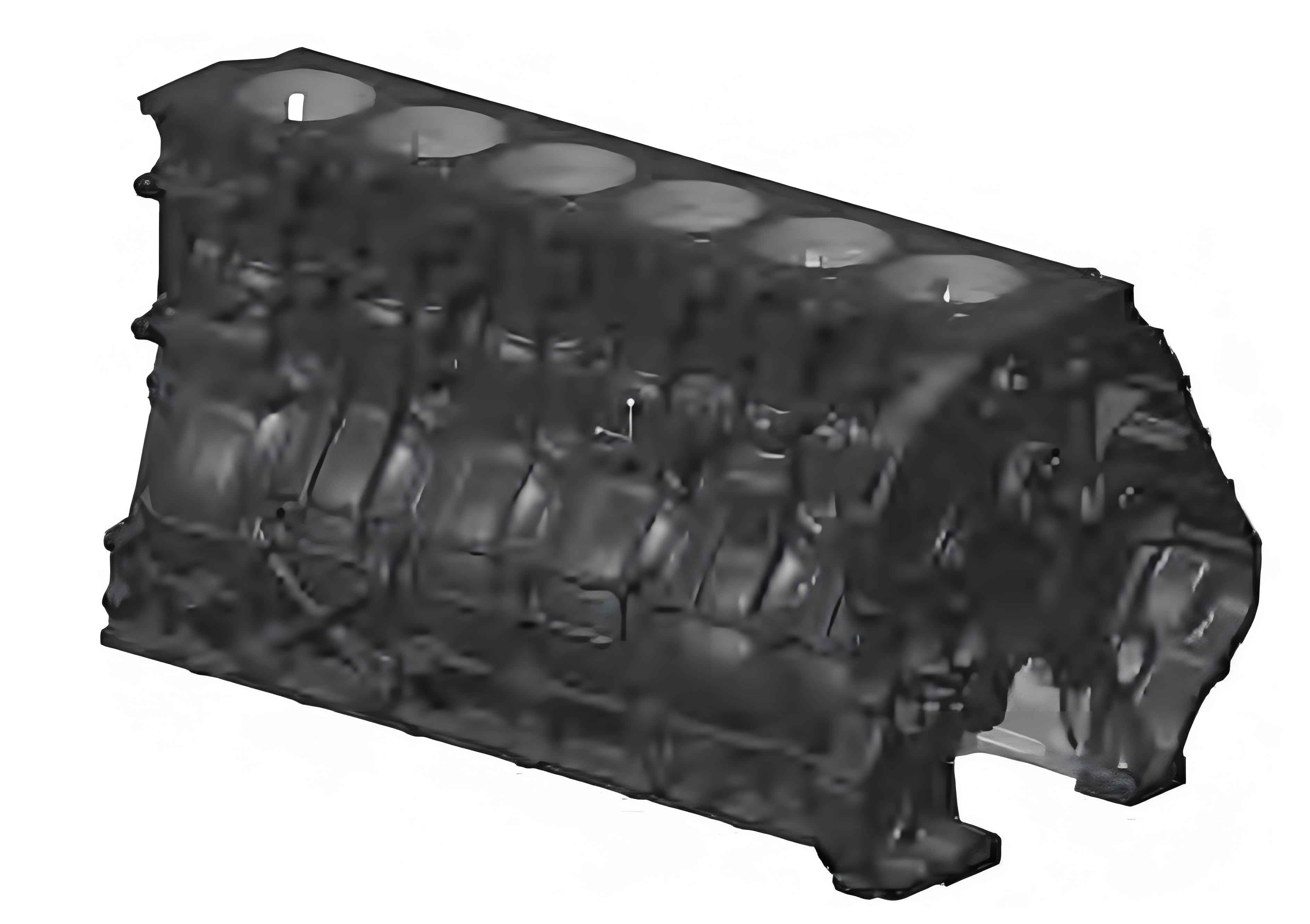Gas porosity remains a critical challenge in wet sand casting of gray iron components, particularly for complex engine cylinder blocks containing over 15 sand cores weighing 350+ kg. This paper presents systematic approaches to reduce gas defects through optimized core design, venting channel configuration, and integrated exhaust systems.

1. Core Weight Reduction Strategy
For engine cylinder block main cores with non-functional thick sections (296mm×64mm), hollow structures can reduce weight while maintaining mechanical strength:
$$W_{reduced} = W_{original} – \rho_{sand} \times V_{hollow}$$
| Parameter | Original | Optimized |
|---|---|---|
| Core Volume (cm³) | 1938 | 1238 |
| Gas Generation (L/kg) | 25-35 | 15-22 |
2. Integrated Venting System Design
The exhaust system for engine cylinder blocks combines core venting channels and mold venting components:
$$Q_{total} = \sum_{i=1}^{n} (A_i \times v_i \times t)$$
Where:
Qtotal = Total gas volume (m³)
Ai = Cross-sectional area of vent i (m²)
vi = Gas velocity through vent i (m/s)
t = Venting time (s)
2.1 Core Venting Channels
Critical cores in engine cylinder block casting:
| Core Type | Vent Diameter (mm) | Channel Length (mm) |
|---|---|---|
| Combustion Chamber | 12-15 | 200-300 |
| Cooling Jacket | 8-10 | 150-250 |
2.2 Mold Venting Elements
Venting system components for engine cylinder block molds:
$$P_{vent} = \frac{\mu L Q}{A^3}$$
Where:
Pvent = Vent pressure (Pa)
μ = Gas viscosity (Pa·s)
L = Vent length (m)
Q = Gas flow rate (m³/s)
A = Vent cross-section area (m²)
| Vent Type | Dimension | Density (/m²) |
|---|---|---|
| Vent Needles | Φ3-5mm | 15-20 |
| Vent Plates | 1.5×20mm | 8-12 |
3. Gas Transport Mechanism
The gas flow dynamics in engine cylinder block casting can be modeled using Darcy’s Law modified for casting conditions:
$$v = \frac{k}{\mu} \left(\frac{\Delta P}{L} + \rho g\right)$$
Where:
v = Superficial velocity (m/s)
k = Permeability (m²)
μ = Dynamic viscosity (Pa·s)
ΔP = Pressure differential (Pa)
L = Flow path length (m)
ρ = Gas density (kg/m³)
g = Gravitational acceleration (m/s²)
4. Process Optimization Results
Implementation results in engine cylinder block production:
| Parameter | Before | After |
|---|---|---|
| Scrap Rate (%) | 8.7 | 2.1 |
| Venting Efficiency | 62% | 89% |
| Core Gas Emission | 35 L/kg | 22 L/kg |
5. Multi-stage Venting Control
Critical pressure stages during engine cylinder block solidification:
$$P_{critical} = P_{atm} + \rho_{metal} g h_{casting}$$
Where:
Pcritical = Maximum allowable gas pressure (Pa)
hcasting = Metal head height (m)
| Solidification Stage | Pressure (kPa) | Venting Priority |
|---|---|---|
| Mold Filling | 80-120 | Core Venting |
| Primary Solidification | 40-80 | Mold Venting |
This systematic approach to engine cylinder block casting exhaust design demonstrates effective gas defect control through integrated core optimization, venting system engineering, and process parameter management. The combination of geometrical modifications and fluid dynamics principles provides a reliable framework for high-quality cast production.
